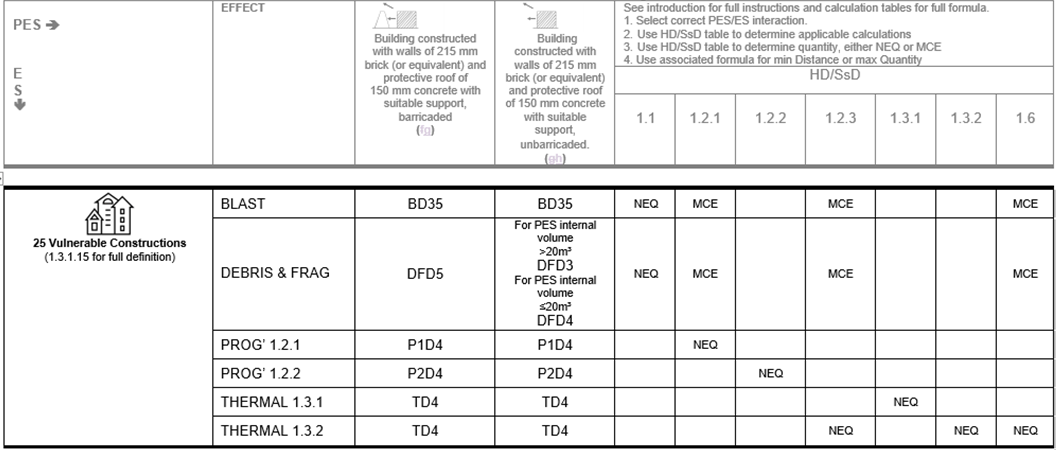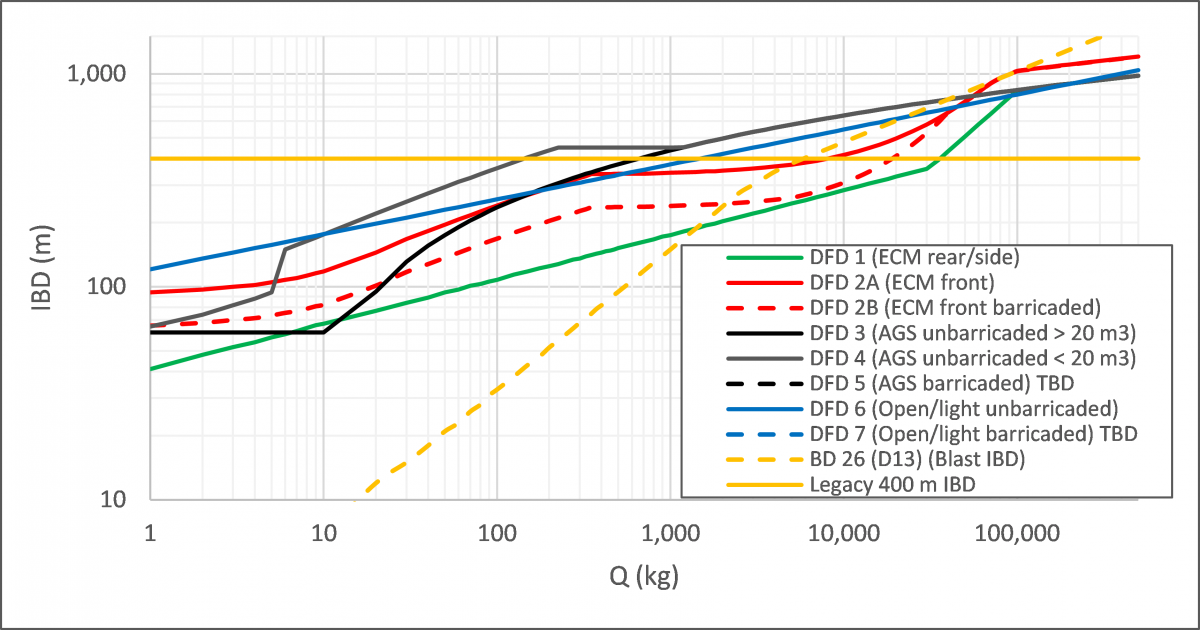What's going on in AC/326 and its sub-groups?
AC/326 Sub Group A – Energetic Materials Team (2019)
Main activities
AC/326 Sub Group A (Energetic Materials Team) is currently responsible for maintaining over 40 STANAGs and AOPs relating to energetic material ingredients, qualification process, hazard testing and safety. To maintain these documents the nations agree a program of work based on national and NATO priorities.
As well as ensuring the documents are current the custodian must implement changes to the NATO document structure; with the STANAG providing only ratification information, test procedures reside within the AOP and all associated information moved to the Standards Related Document (SRD).
Recent efforts have focused on the amalgamation of all mechanical testing STANAGs to form AOP/STANAG 4717. This document is in the final stages of review and therefore should be available within the next year.
EU legislation (REACh) has generated research into new propellant stabilisers, which in turn has an impact on the stability test procedures and requirements STANAG (4620 and AOP-48). Several unsupported working groups have met over the last two years to discuss current methods, knowledge and guidance on new stabilizers characterization for propellants. A new edition of AOP-48 will be released in the next year.
STANAG/AOP 4582, test procedures for assessing the quality of nitrocellulose, has also undergone a thorough review with respect to the current methods for assessing the nitrocellulose. Methods such as the Abel Heat Test are no longer considered accurate. The next edition will be release within the next two years.
STANAG 4147, Chemical Compatibility, is an essential document for explosives safety. Edition 2 has been edited and the update released within the year. The STANAG has been added to the program of work for continued review. MSIAC support to SG/A with a review of compatibility testing (L-230).
AOP-7, Qualification of Explosive Materials, is currently being re-structured and national sections being updated. Information and guidance in STANAG 4170 has been transferred to AOP-7 leaving the STANAG to be the covering document. AOP-26 (NATO catalogue of explosives) will become a Standards Related Document (SRD) to AOP-7. Discussions on the update to AOP-7 will take place prior to the next SG/A meeting in September.
The SG/A Gun Launch Setback Ignition Study Working Group has begun initial development an assessment protocols NATO STANREC for: acceptability of explosive for gun launch; acceptable defect types, sizes, distributions; and acceptable defect identification methods (see separate article).
Drs Matthew Andrews (TSO EM)
AC/326 Sub Group B – Ammunition Systems Design and Assessment
Main activities
The fourteenth meeting of the CNAD Ammunition Safety Group (AC/326) Sub Group B on Ammunition Systems Design and Assessment was held at NATO HQ in Brussels on the 11th and 12th of April 2019. The majority of the agenda considered the ongoing program of work to update the portfolio of NATO standards concerning design and assessment of ammunition systems, including recent changes to the IM test standards.
One important activity which continues is the production of the AAS3P series of documents, which provide guidance on the S3 assessment of different categories of munitions, replacing an older collection of system-specific STANAGs. A timely presentation by France highlighted the need for NATO guidance on munition safety design requirements and best practice, and agreement was given in principle to form a new Custodial Working Group to consider this matter once the AAS3P series had been completed.
The final STANAG 4382 Slow Heating Custodial Working Group (SH CWG) Meeting was held on 18-19 September 2018 at the Kromhout Kazerne, Utrecht, Netherlands. The USA is the custodian, with Stephen Struck from the U.S. Air Force Research Laboratory overseeing the process. The draft of STANAG 4382 and associated AOP-4382 are now being reviewed for upcoming promulgation.
Several other activities took place the same week as the meeting:
Sympathetic Reaction STANAG Custodial Working Group
The 3rd STANAG 4396 Sympathetic Reaction CWG (SR CWG) meeting was held on 8-9 April 2019 at NATO HQ in Brussels, Belgium. France is the custodian, with Christophe Jacq leading the process. The review and updating of STANAG 4396 and AOP-4396 is nearing completion. The 4th and final SR CWG Meeting is planned for 16 SEP 2019 in Koblenz, Germany. The associated draft documents will subsequently be reviewed for promulgation.
Insensitive Munitions / Hazard Classification Harmonization Custodial Working Group
Immediately following the Sympathetic Reaction CWG, the IM/HC Harmonization CWG met to discuss progress on the development of new NATO policy to realise the benefits of more closely aligned IM and HC testing.
Topics of discussion included how the whole body of evidence from both IM and HC testing might be used to improve the assignment of both; and the concept of ‘Hazard Types’, which represent a situation specific assessment of explosive risk similar to Hazard Classification, but used at lifecycle stages other than transportation.
It was agreed that before the next CWG meeting, work would progress to define the required policy hierarchy to enable IM/HC harmonization, including drafting of new NATO standards and revision of existing NATO standards.
Munitions Health Management
For details see separate article by Christelle Collet and Kevin Jaansalu.
Matt Ferran (TSO Munition Systems)
AC/326 Sub Group C – In–service and operational safety management
The AC/326 SG/C is responsible for developing and maintaining standards in the field of In-Service & Operational Safety Management. These are published in AASTP-1 and AASTP-5 for safe storage in the home country and on deployed missions. AASTP-3 deals with hazard classification (HC) of ammunition, and AASTP-4 provides a detailed description of explosives safety risk analysis and related engineering models for explosion effects, damage and injury. There are a number of active technical working groups that aim to further develop the aforementioned standards and keep the technical content up to date with the latest experimental results and insights.
AASTP-1 Edition C Version 1 (next revision) will see restructured Quantity Distance (QD) tables with distinct criteria for blast, fragmentation and debris in detonation events, fragmentation in HD 1.2 progressive events, as well as thermal effects. The restructured tables will ensure consistency across the various Hazard Divisions and will provide transparency with respect to the contribution of each explosive effect. A snapshot of the new approach / table is given below.

The new approach will resolve a number of discrepancies in relation to HD 1.2 Maximum Credible Event (MCE) distances. Also, it will include Debris and Fragment Distances (DFD) for detonation events in various types of barricaded and unbarricaded munition magazines, see graph below.

For small quantities (<500 kg) of HD 1.1 this will provide shorter distances compared to the currently required “400 m” minimum distance. For larger quantities DFD will exceed 400 m, until eventually blast becomes the dominant factor. The technical background and basis of the AASTP-1 QDs has been described in MSIAC report L-229 “Experimental and Theoretical basis of NATO standards for safe storage and transport of ammunition and explosives”, which is currently under review by the community before being published.
The Airfield Criteria Working Group (ACWG) has generated another big change to be implemented in Edition C Version 1. Furthermore, there will be new barricade requirements, rounding rules and a revised introduction to the manual.
Looking further ahead, beyond Edition C Version 1, work has already started in relation to the update of Ports Criteria. The Ports Criteria Working Group (PCWG) met prior to the last SGC meeting, which was held in London (27-29 March).
The AASTP-4 Risk Analysis Working Group (RAWG) meeting was held between 8 and 10 April at EMI in Freiburg, Germany. With a current focus on mass detonation events, it was decided to broaden the scope of AASTP-4 by describing the application to other HDs and IM. Also plans were made to add content about risk-based propagation of explosives, thermal effects based on the latest test results, progressive event reactions and results from the MSIAC Improved Explosives and Munitions Risk Management (IEMRM) workshop, held 10-14 September 2018.
Martijn van der Voort (TSO Safety of Munition Storage and Transport)


